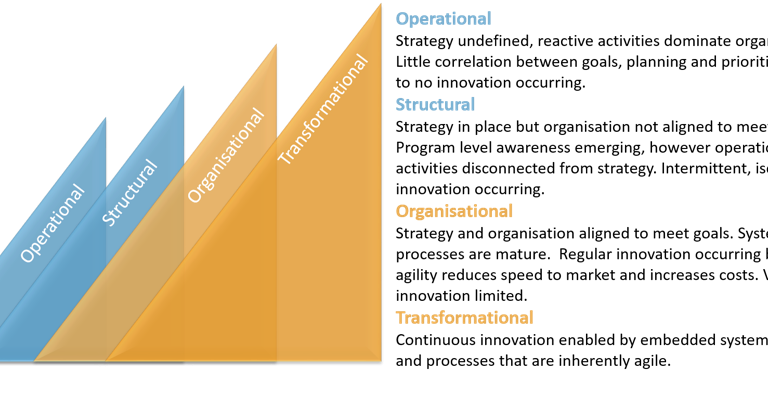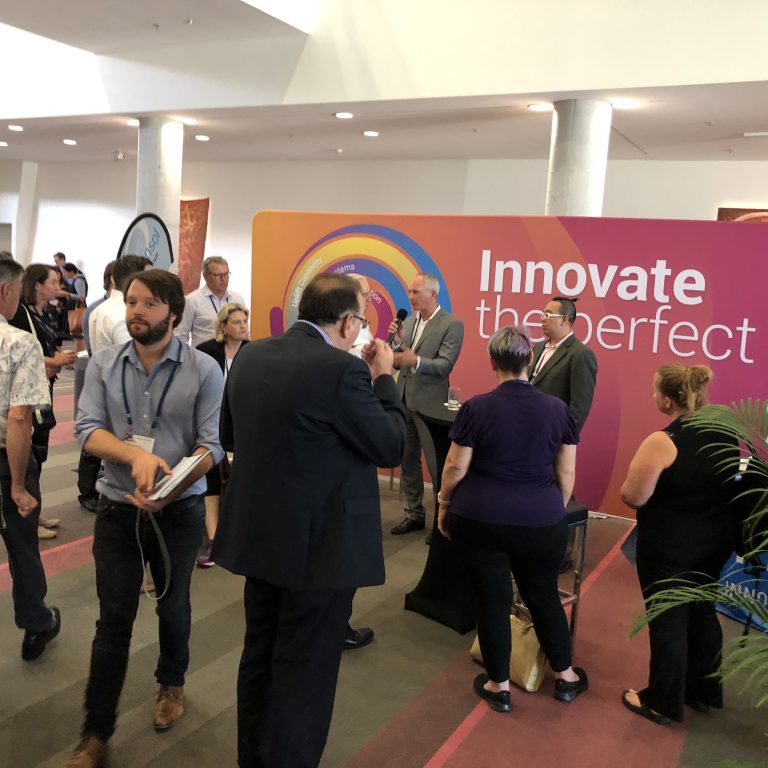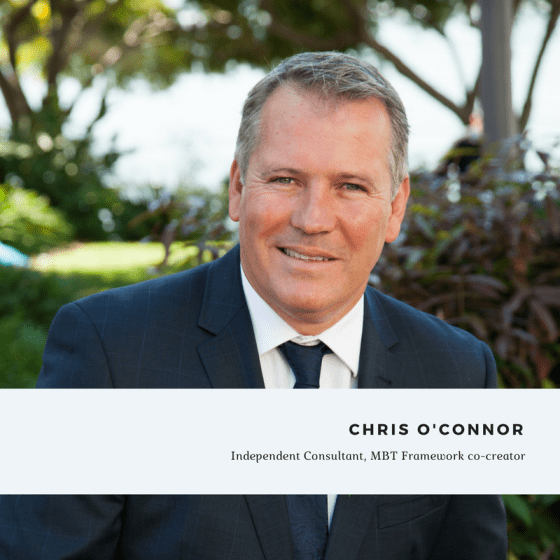If the threat of being outperformed by new market entrants isn’t motivation enough to invest in innovation, the financial returns companies stand to gain from doing so, should be.
On average in Australia, every $1 invested in innovation returns $2 in sales. In 2014-15, Australia invested approximately $30 billion in innovation, resulting in $60 billion of innovation sales[1]. Research also highlights that innovation-active businesses in Australia are 40% more likely to increase income and profitability, and twice as likely to export compared with businesses that don’t innovate[2].
The Australian Innovation System Report published in 2016, goes a step further to suggest that companies who persistently innovate reap even greater rewards. Working with the Australian Bureau of Statistics, the report found a positive association between innovation and business performance. The report identified four types of businesses:
- Non-innovators: didn’t report introducing any type of innovation in a three-year period.
- Intermittent innovators: reported introducing innovation in one year out of three.
- Regular innovators: introduced innovation in two years out of three.
- Persistent innovators: introduced innovation every year over a three-year period.
Persistent innovators significantly outgrew other businesses in terms of sales, value-add, employment and profit growth, generating 18 times the value-add growth of intermittent innovators and five times the sales growth of regular innovators[3]. Global companies such as Apple, Google and Tesla are examples of persistent innovators and consistently top the ranks of Global Innovators[4], but they don’t necessarily spend the most on Research and Development (R&D).
For example, while Tesla Motors ranks as the 4th most innovative company in the world in 2016, they invested just 0.7 billion US dollars on R&D, spending a fraction of what the top 20 spenders for Research and Development[5] invest.
The converse is also true, with many of the top R&D spenders not making the innovation list, despite their hefty investment.
So, while investing in innovation through a traditional R&D-style approach appears to make some difference, it is clearly not the only factor at play.
In their Top innovators and spenders 2016 research report, Strategy& suggest that the most innovative companies appear to be adopting a more holistic approach to innovation — one that focuses on a combination of capabilities (including talent, knowledge, team structure, tools and processes), that together enable innovation efforts to thrive and help to create successful, and persistently innovative companies[6].
In addition to this focus on organisational capability, a recent article in Forbes acknowledged that innovation needs to respond to both market risk (how capable a company is at understanding customer needs and bringing relevant products to market), as well as technological risk (how capable a company is at creating new technologies and making them work)[7]. Traditionally, innovation has focused on technological risk resolution through R&D, but by broadening its focus to consider customer need, business leaders can move towards a sustainable and persistent approach to innovation.
So, how can an organisation become a persistent innovator, where innovation becomes an intrinsic aspect of their organisation and results in significant, positive and direct business growth?
Frameworks such as the Modern Business Transformation (MBT) Framework provide such an approach. The MBT Framework is a comprehensive approach to accelerate innovation and enhance organisational agility. It establishes the structure, governance and method required for continuous innovation while simultaneously addressing specific organisational capabilities that stifle transformation efforts.
At its core, the Framework helps position organisations to quickly capitalise on market opportunities, respond to threats and competition more readily, and to harness and operationalise innovative ideas at speed.
The framework consists of three fundamental pillars: Innovation Lifecycle, Capability Uplift Strategy and Technology Platform, in combination these pillars help organisations to establish continuous innovation, optimise business operations, and keep pace with market changes.
- The Innovation Lifecyle: establishes practices for continuous innovation so that ideas either ‘fail fast’ or ‘operationalise quickly’. This ensures ideas not only respond to technological risks but also market risks.
- Capability Uplift: identifies and addresses aspects of business operations that must be optimised to support innovative change including Leadership and Culture; Organisational Strategy; Changes and Communications; Methods; Process; People; and Technology. This ensures the organisation itself doesn’t inhibit innovation and that it embodies a set of capabilities to enable innovation.
- Technology Platform: implementing a responsive, rapid application development platform that can keep pace with business and market changes. This equips the organisation with the tools to proactively deliver innovation.
In addition, the MBT Framework’s Maturity Model maps to the four business types defined in the Australian Innovation System Report, and assists companies in taking incremental steps towards achieving ‘persistent innovation’:
- Operational – Non-innovators
- Structural – Intermittent-innovators
- Organisational – Regular-innovators
- Transformational – Persistent-innovators

MBT Framework: Innovation Maturity Model By adopting this holistic approach, the MBT Framework addresses the inherent conflicts between innovation and day-to-day operations, identifying what is required to ensure innovation becomes a core and continuous part of the organisation’s DNA enabling them to function as persistent innovators.
While the initial investment in getting your organisation ‘innovation ready’ is not insignificant, and the task of proper transformation not for the faint-hearted, the long-term benefits and returns realised by investing in innovation holistically, are paramount to a company’s success.
Article References:
[1] Office of Chief Economist (2016) Australian Innovation System Report – https://industry.gov.au/Office-of-the-Chief-Economist/Publications/Documents/Australian-Innovation-System/2016-AIS-Report.pdf,
[2] ABS (2016) Selected characteristics of Australian businesses, 2014–15, cat no. 8167.0
[3] Office of Chief Economist (2016) Australian Innovation System Report – https://industry.gov.au/Office-of-the-Chief-Economist/Publications/Documents/Australian-Innovation-System/2016-AIS-Report.pdf,
[4] Strategy& (2016) Top innovators and spenders https://www.strategyand.pwc.com/innovation1000#GlobalKeyFindingsTabs3
[5] Strategy& (2016) Top innovators and spenders https://www.strategyand.pwc.com/innovation1000#GlobalKeyFindingsTabs3
[6] Strategy& (2016) Top innovators and spenders https://www.strategyand.pwc.com/innovation1000#GlobalKeyFindingsTabs3
[7] Forbes (2016) Why R&D spending is not a measure of innovation https://www.forbes.com/sites/tendayiviki/2016/08/21/why-rd-spending-is-not-a-measure-of-innovation/#237f97c77dd4
About the Author
Chris O'Connor
Independent Consultant
MBT Independent Consultant, Chris O’Connor is focused on helping organisations to find the right mix of innovative practices, operational agility and organisational maturity. Chris has over 25 years of experience working with small and large organisations in a variety of industries and experiencing the common problems that the need for change brings. His experience includes organisational transformation, culture and performance, operational change program, innovation and agility, technology lead change initiatives and business and technology integration.
Related Posts

Innovation-as-Usual
“Nobody gets excited if you elaborate on what’s broken…” Professor Michael Rosemann joins us on the Procensol and MBT booth at BiiG 2017 to discuss…
Read More
Culture and leadership for continuous innovation
evidence suggests that traditional approaches to developing a culture of innovation are not sustainable as they do not address key inhibitors such as operational systems and processes that cannot support continuous change. To establish a culture of innovation, organisations need to: secure executive approval and leadership; engage their employees; and optimise and align their internal business operations by exploring technological advancements.
Read More

